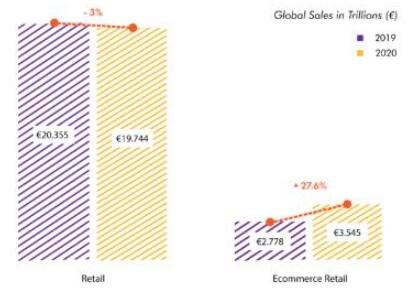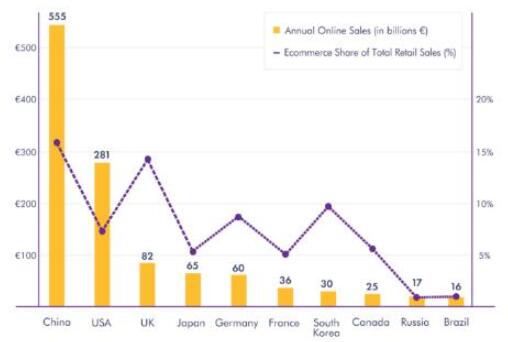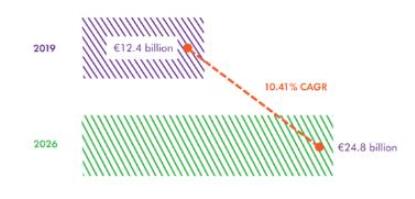May
Robot automation technology helps the development of cross-border e-commerce
With the continuous digitization of modern life, the retail industry has undergone tremendous changes in the past few years, making e-commerce an important part of the global retail industry. Both the e-commerce and mobile robot markets are growing rapidly. Despite the current uncertainties in the global economy, e-commerce will continue to grow and is expected to account for 22% of global retail sales by 2023, compared to 14.1% in 2019.
We can not only see the impact of digitalization on the retail industry, but also warehouse automation statistics also show that warehouses and distribution centers are embracing automation at an increasing speed. Of course, the growth of the e-commerce sector is one of the driving forces of this trend. At the same time, labor costs continue to rise, the emphasis on workplace safety, and the growing demand for fast fulfillment of orders.
The following are 30 e-commerce statistics that show how digitalization currently affects the retail industry. They range from trends in warehouse automation to new order fulfillment methods in logistics and supply chain management. The underlying business drivers of these statistics will ensure that automated deployments, including fixed and mobile robotic systems, will continue to increase.

Comparison of global retail sales and e-commerce retail sales in 2020

It is expected that the global warehouse automation market will show tremendous growth in the next few years. This growth is largely affected by the rise of e-commerce, the globalization of supply chain networks, the emergence of autonomous mobile robots (AMR), and the importance of order fulfillment in logistics operations.
Nowadays, warehouse automation statistics are largely affected by the revolution of automation solutions, which can meet the needs of consumers while reducing production and logistics costs. As a result, a general-purpose automation system that operates in multiple environments is adopted.
Higher levels of warehouse automation-The acceleration of e-commerce is driving higher levels of warehouse automation and the information systems that support them. In order to effectively fulfill orders and meet customer delivery expectations, and adapt to rapid operational changes (such as during the Covid-19 pandemic), automation has become a true game changer.
Rapid growth of warehouse automation-The global warehouse automation market is expected to show tremendous growth in the next few years. According to Statista, the global warehouse automation market is expected to grow from US$15 billion in 2019 to US$30 billion in 2026 (Figure 3). This growth is largely affected by the rise of e-commerce, the globalization of supply chain networks, the emergence of autonomous mobile robots (AMR), and the importance of order fulfillment in logistics operations.

Covid-19 Accelerator-Since the beginning of the Covid-19 pandemic, distribution center sales have increased significantly. According to the latest report of Peerless Research Group, 10% of respondents saw their e-commerce channel growth by 60% or more, while a total of 34% of respondents said that since the establishment of e-commerce, e-commerce has increased by 30%. %or above. Pandemic.
Increased investment in automation-Due to the optimistic economic outlook, more and more warehouses and distribution centers have invested in robotics and automation. A 2018 report by a logistics management company found that 42% of respondents are making investments due to the good economic situation-an increase of 7% compared to 2017.
AMR increases productivity and efficiency – Companies that deploy AMR and other robotic solutions in warehouses have seen significant productivity gains. More than 70% of the order fulfillment operations and warehouses (especially the retail and wholesale industries) that deploy AMR have achieved double-digit improvements, which shows that the main reason for using robotics is to improve the company's overall efficiency and productivity.
Solving the problem of worker shortages-Data shows that the main reason for introducing AMR in fast-growing warehouses and fulfillment centers is worker shortages, rather than replacing workers. For example, in the past five years, Amazon has adopted 200,000 mobile robots in its warehouses while increasing the number of employees by the same number.